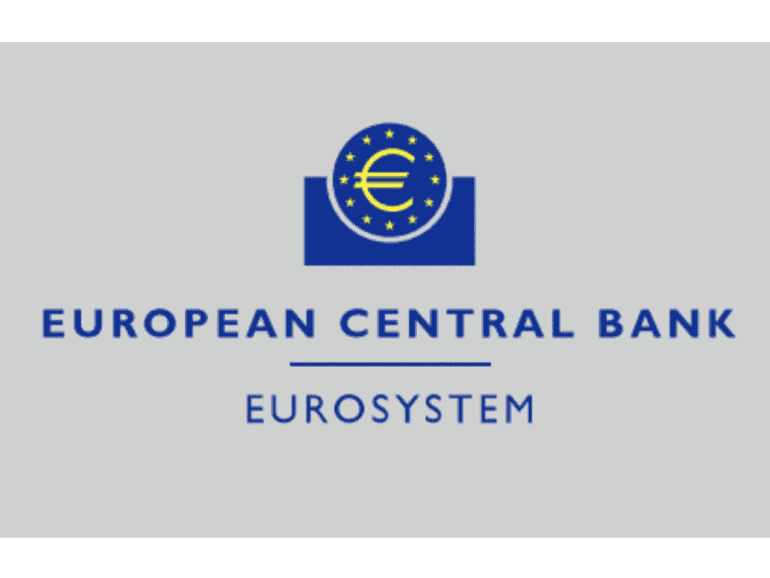A report from the European Central Bank (ECB) assessed whether six avenues of cross-border payments could meet the criteria of being immediate, cheap, universal, and settled in a secure settlement medium.
The ECB states, “the search for such a solution is as old as international commerce and the implied need to pay.”
The paper describes current visions of how to eventually find this holy grail within the next decade, namely through:
- Modernized correspondent banking.
- Emerging cross-border fintech solutions.
- Bitcoin.
- Global stablecoins.
- Interlinked instant payment systems with FX conversion layer.
- Interlinked CBDC with FX conversion layer.
It is explained how each settlement mechanism works, and an assessment is made of whether or not it can be considered the holy grail of cross-border payments.
Molly Elmore, an analyst focused on the future of money, digital assets, blockchain & geopolitics, states, “This paper is a comprehensive analysis of different ways to tackle the problem of cross-border payments using blockchain technology. I agree with their thesis. The current system of sending money from one country to another is slow, expensive, and outdated.”
Background
The G20 determined that improving cross-border payments would be a top priority in 2020. A three-stage process was coordinated by the Financial Stability Board (FSB) in coordination with the Committee on Payments and Market Infrastructures (CPMI) and other standard-setting bodies to enhance cross-border payments. The conclusion resulted from several considerations, namely:
- Globalization and thus volumes of cross-border payments have continued (and indeed are forecasted) to increase.
- Although digitalization has made instant cross-border communication quasi-cost-free, there has not been a striking decline in the costs associated with executing cross-border payments.
Two-solution approach
CBDCs and instant payment systems interconnected, both using competitive FX conversion layers, maybe the key to delivering the holy grail for larger cross-border payment corridors, the ECB notes. This is as they combine:
- Technical feasibility.
- Relative simplicity in their architecture.
- The ability of the market to remain competitive and open is maintained by avoiding the dominance of one or a limited number of market participants who would ultimately exploit their market power.
Bitcoin
In the paper, they review various visions of achieving the holy grail and suggest bitcoin is the least credible; stablecoins, traditional correspondent banking, and cross-border fintechs take an intermediary place but may all contribute to improvement over the following years.
Elmore adds to this point, focusing on its volatility and environmental concerns. “bitcoin has challenges filling this role as the price is volatile, which means it could change while processing a transaction and uses a lot of energy. Bitcoin’s validation method (proof of work) raises environmental concerns, but the high energy use also functions like a tax. Businesses will naturally seek solutions with lower fees, and the energy costs with bitcoin are impractical for many situations, especially transactions for small amounts of money.”
Related:
Stablecoins
According to the paper, compared to bitcoin, stablecoins are a less revolutionary but better solution because they have various possible specifications in terms of underlying currencies or assets; and technology, e.g., single ledger, distributed ledger, blockchain, etc. The ECB points to the use of stablecoins due to:
- Non-ideological search for an efficient global means of payment, stablecoins have the potential to provide an efficient means of cross-border payment for several reasons:
- Potentially high technological efficiency. Stablecoins can be relatively efficient as they are, per se, technology agnostic, i.e., the most efficient and modern technology can be chosen.
- Economies of scale. Low costs can also be achieved thanks to the scale, e.g., in case existing membership in social networks is used as a basis to onboard users. Indeed, BigTechs like Facebook, with billions of customers, can approach potential stablecoin customers efficiently, even if additional KYC is required for payment functions to prevent illicit payments and money laundering, particularly in an international context.
- Value stability. By binding their value to existing fiat currencies or related meaningful baskets like the SDR, the value stability required for a means of payment can be achieved.
Elmore agrees, “Using CBDCs is a good solution. Each region has its sovereign currency and corresponding CBDC (Euro, Yuan, US Dollar, Yen). When a person in country A initiates a transaction through their Bank A, to the person in country B, they use a bridge currency to make that transaction happen.”
“This eliminates the need for correspondent bank accounts which hold trillions of dollars in reserve (I’m sure banks would love to use that money for something else) and removes the cost of involving the correspondent bank (fees). This use of CBDCs benefits banking and citizens as it solves a painful and expensive problem. ”
However, some potential drawbacks of stablecoins include:
- Market power and network effects. A thriving global stablecoin that would perform well in terms of universal reach would have significant market power across international borders, presumably giving it leeway to eventually exploit this market power in one way or another. BigTechs could also store, use and sell payment data, raising privacy concerns.
- Financial stability issues. International regulators and standard setters have identified significant potential financial stability and market integrity issues relating to the large-scale balance sheet of a global stablecoin and its reserve of liquid assets.
- Threat to monetary sovereignty. Sovereign states will likely perceive successful global stablecoins as threatening their monetary sovereignty. In addition to the issue of currency substitution, the availability of global cross-border payment information to the stablecoin issuer and its use for commercial purposes, or access to it by a foreign power, and the possible vulnerability of the stablecoin issuer to political pressures (e.g., sanctions suddenly prohibiting to serve certain jurisdictions), create vulnerabilities for nation states and their citizens.
- The fragmentation that non-interoperable closed-loop payment solutions like stablecoins create fragmentation. Interoperability may be a solution, but potentially successful stablecoin providers may want to avoid it.
Elmore agrees with these concerns “these are considerable concerns for citizens around retail CBDCs, where the central bank would give every citizen a digital wallet and send blockchain currency directly to citizens.
This is “programmable” money and would give the issuer of the currency (the central bank) the ability to determine which expenses would be allowed (e.g., only food or gas, no plane tickets or concert tickets).”
The sections of the paper
The paper’s authors argue that after more than 1,000 years of search, the holy grail of cross-border payments can be found within the next 10 years.
To this end, Section 2 of the paper briefly recalls a few historical elements involving the search for efficient cross-border payments and identifies several universal challenges across time. The paper reviews several options for enhancing cross-border payments to reach the holy grail through a series of financial accounts.
Section 3 covers correspondent banking in its current implementation and a modernized version.
Section 4 reviews emerging fintech solutions, which have already delivered in terms of offering cheaper than ever cross-border payments for certain currencies and use cases.
Section 5 discusses bitcoin, which is distinct from the alternatives as it relies on a completely different settlement asset that is not linked to any fiat currency.
Section 6 turns to global stablecoins such as the one envisaged initially by Facebook (Libra/Diem). Section 7 unpacks the case of interlinking domestic payment systems through a cross-system and FX conversion layer.
Finally, section 8 analyses the case of central bank digital currencies (CBDC), again interlinked cross-border through an FX conversion layer. Each of the arrangements covered in Sections 3 to 8 is assessed in terms of their actual or potential efficiency, architectural parsimoniousness, competitiveness, and, relating to that, preservation of monetary sovereignty.
Section 9 concludes that the interlinking of domestic payment systems and the future interoperability of CBDCs are the most promising avenues, albeit subject to solid progress on the AML/CFT compliance side to ensure straight-through-processing (STP) for the large majority of cross-border payments.



